A new tourist attraction has been created in Budapest by adapting the freshly renovated towers of the Inner City Parish Church into belvederes. The towers were unveiled to the press on 26 June 2020.
Journalists were received in the lower church by Parish Priest, Zoltán Osztie and Associate for Tourism, Mihály Aranyossy. Péter Tóth, CEO of Hetedhét Építész Ltd, which was responsible for the architectural design of the towers, and István Vantal, CEO of BAU-VIP Generál Ltd., responsible for their construction, shared points of interest during a press briefing.

Press conference held in the lower church, figures from left to right? Mihály Aranyossy (standing), Péter Tóth, István Vantal, Dr. Zoltán Osztie (Photo: Balázs Both/pestbuda.hu)
During the press conference, parish priest Zoltán Osztie stated that he was proud of the novelty added to the Inner City Parish Church. However, he also stressed that the lookouts would not interfere with the everyday operation of the church. The building will remain, first and foremost, a place of worship. However, the public should be able to see the cultural-historical heritage of the church, which can be traced to Roman times.
The towers and connected exhibition can be separated from the sacred areas of the church, enabling believers and tourists to both visit the church.
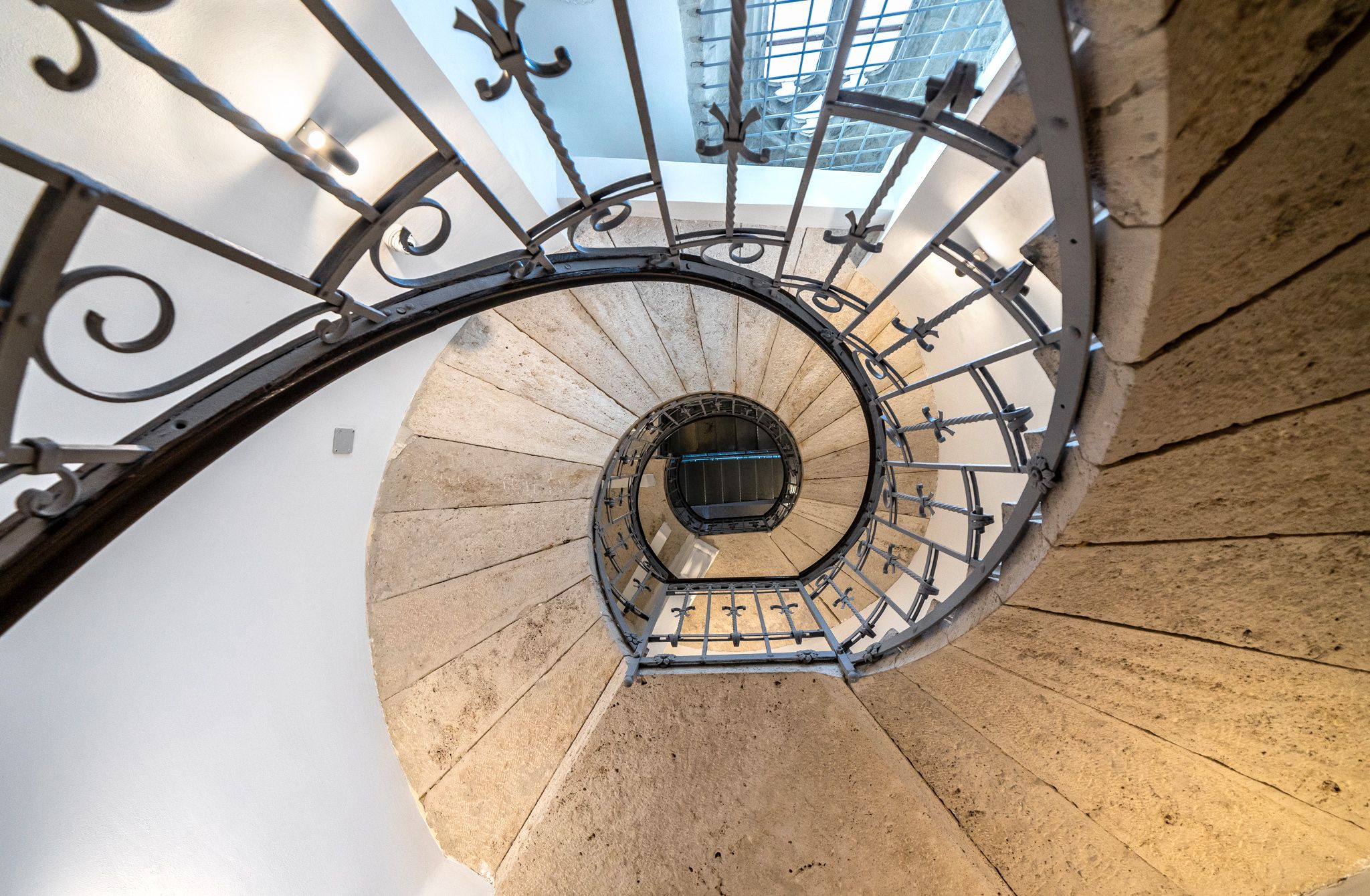
The spectacular spiral staircase leading up the North Tower (Photo: Balázs Both/pestbuda.hu)
According to István Vantal, the towers were in a severely neglected condition when renovation began in December 2018. To create the new viewpoints and exhibition space, the historic walls of the structure first had to be cleared, and the rickety wooden structures leading up the towers demolished.
At the press conference, Péter Tóth added: construction began after a one year design period. However, the renovation of the towers turned into a project that required continuous design work since the structure of the historic building was in part only uncovered by the construction works themselves. As an increasing number of problems arose, newer and newer additional plans were needed.
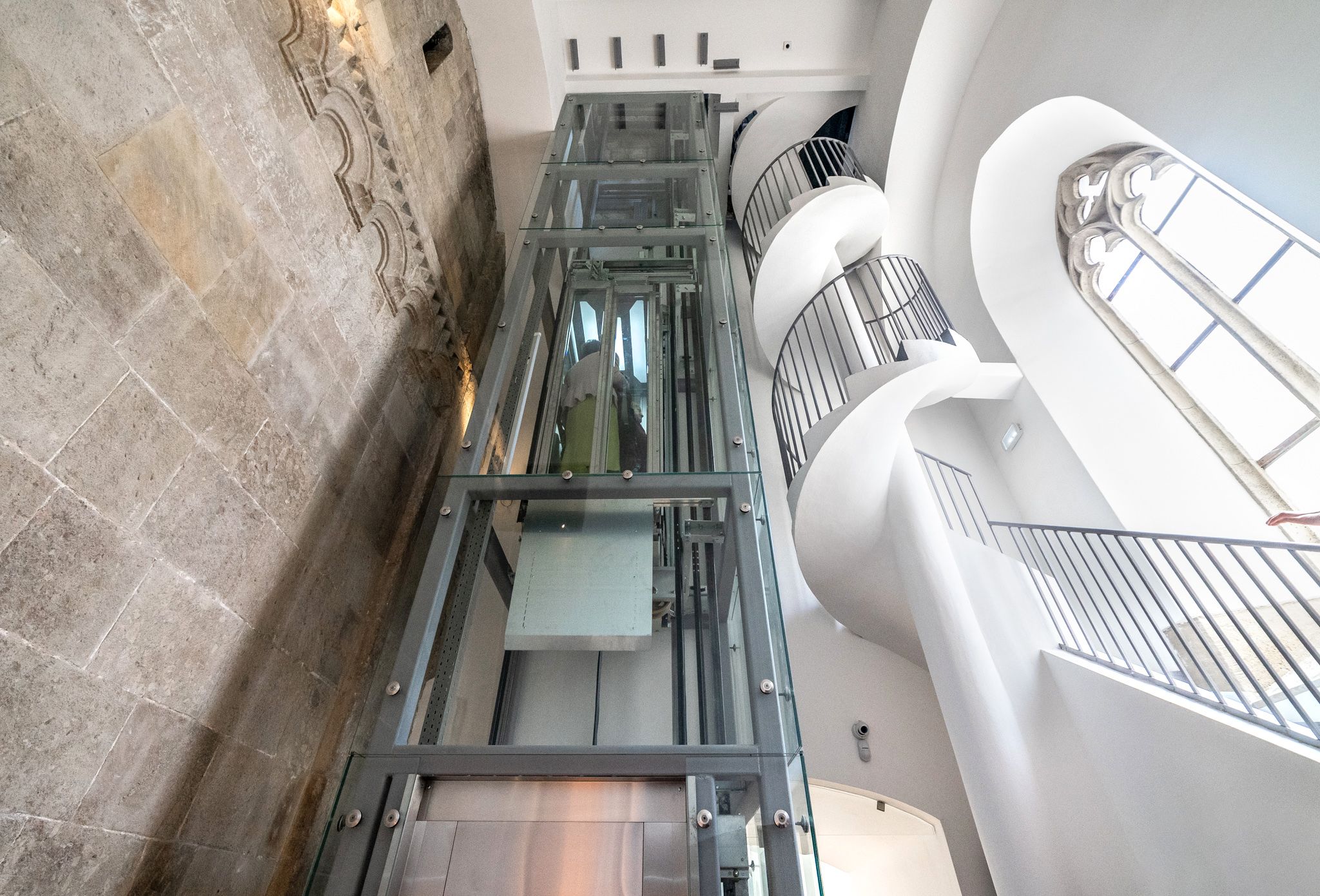
Old meets new in the South Tower: a lift and stairs lead to the top of the tower (Photo Balázs Both/pestbuda.hu)
The experts emphasised how the construction works not only had to preserve the historical and cultural values of the church but had to do so in a way that allowed for the creation of the modern exhibition space.
Following the press conference, invited journalists were allowed to visit the towers themselves.
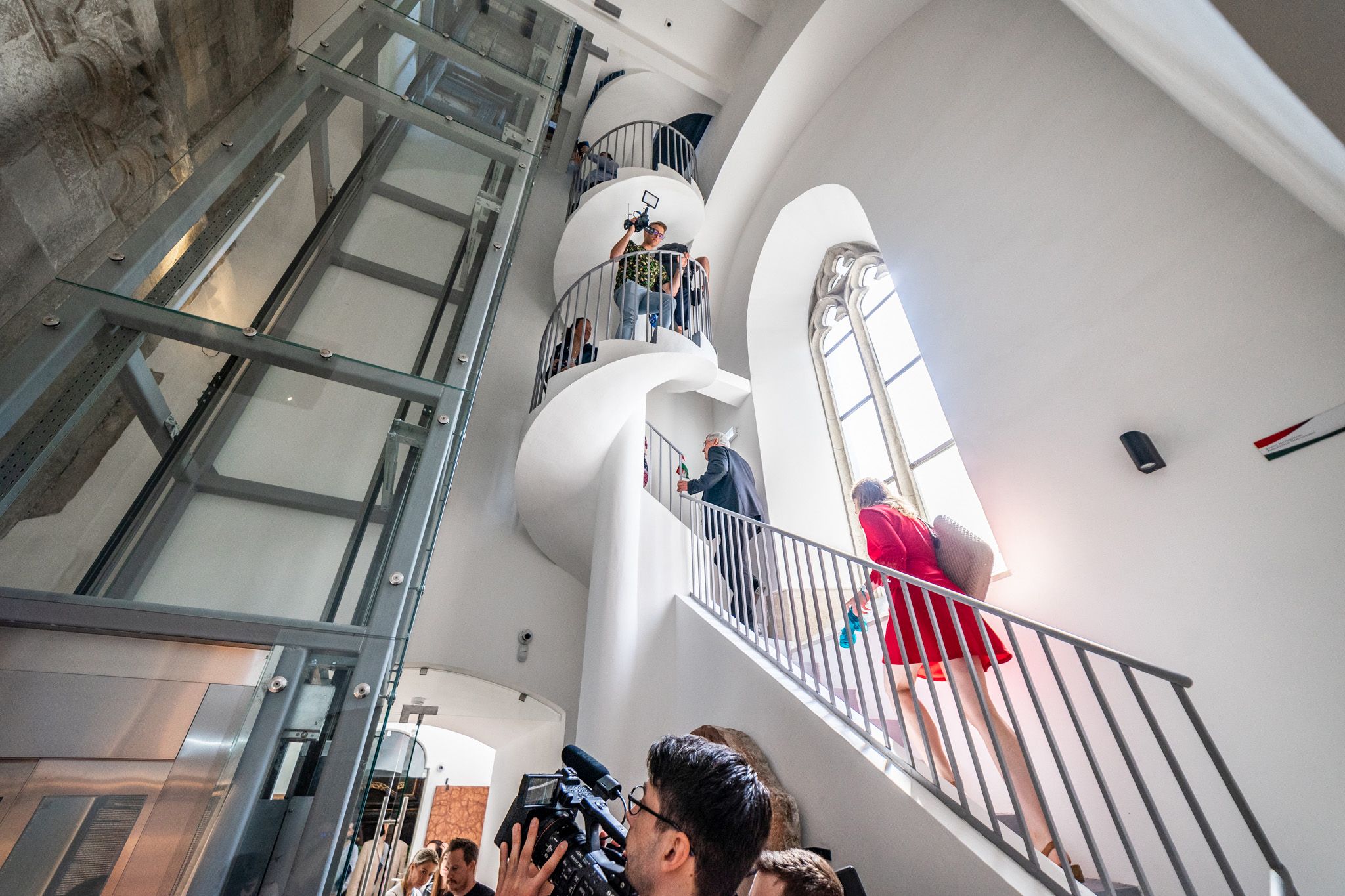
The tour began in the south tower and bypassed the lift. (Photo: Balázs Both/pestbuda.hu
The guided tour began in the south tower. The two levels can be accessed by both stairs and a lift. A tight spiral staircase leads up to the first level at 11 metres (36 feet). This is replaced by a more modern steel staircase on the climb to the second level, which reaches 18 metres (59 feet) into the air.
Each level of the two towers offers three different views. The south tower overlooks Kosuth Street, Szabadsajtó Street, the Danube, Elizabeth Bridge, and Gellért Hill with the Citadel, Statue of Liberty and St. Gerard memorial, alongside the Rudas Baths at the foot of the hill.
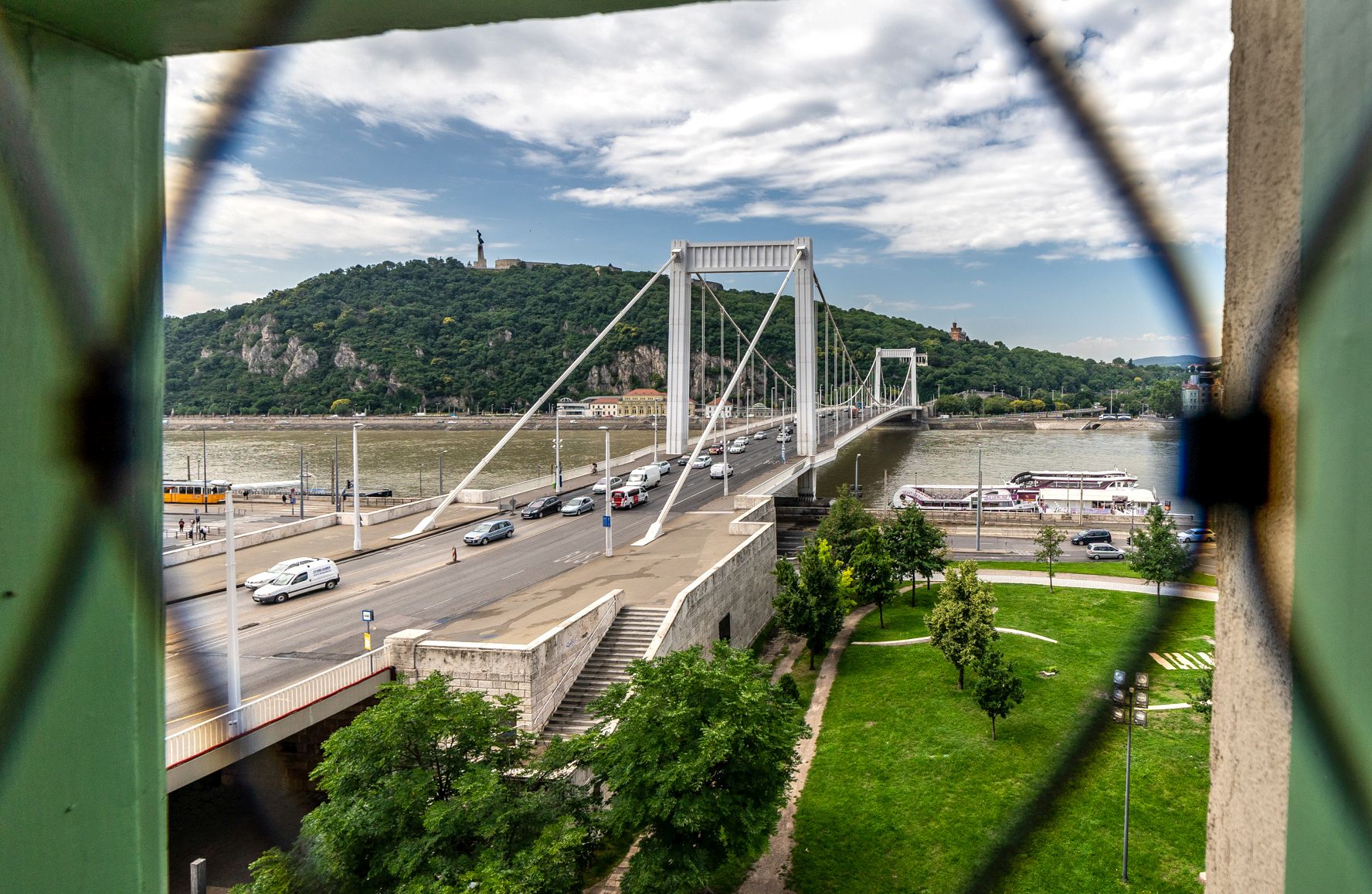 View of Elizabeth Bridge from the lower level of the south tower (Photo Balázs Both/pestbuda.hu)
View of Elizabeth Bridge from the lower level of the south tower (Photo Balázs Both/pestbuda.hu)
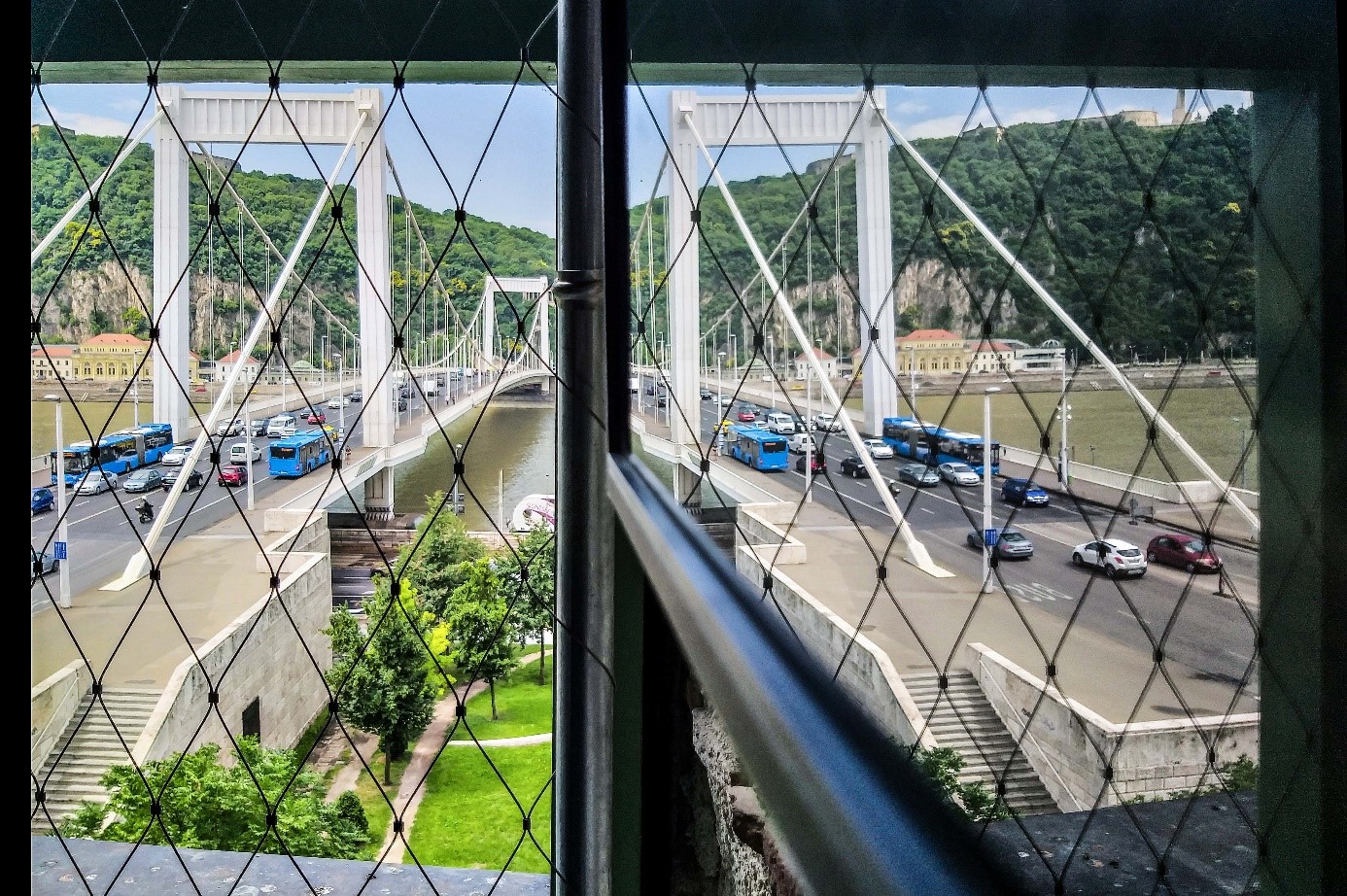 Elizabeth Bridge reflected on a touch screen placed on the first level of the south tower (Photo Balázs Both/pestbuda.hu)
Elizabeth Bridge reflected on a touch screen placed on the first level of the south tower (Photo Balázs Both/pestbuda.hu)
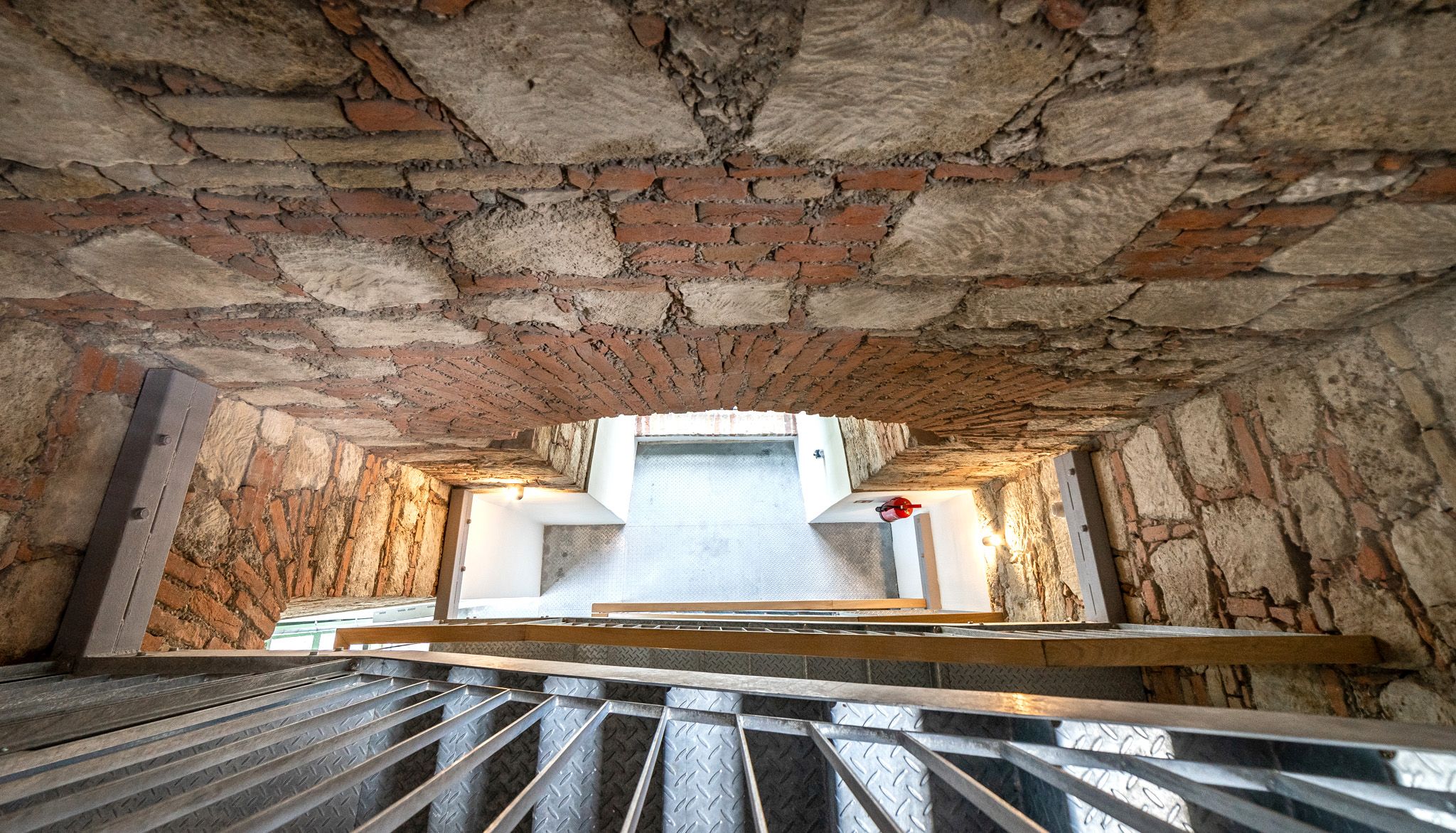
Only the brave should look down from the upper level of the south tower (Photo Balázs Both/pestbuda.hu)
A nearly 17 metre (56 foot) bridge leads from the second level of the south tower to the north tower, which has newly been named after Ferenc Liszt. The bridge offers a view of the church's wooden roof, while a projected video showcases how the view from the towers changes through the day.
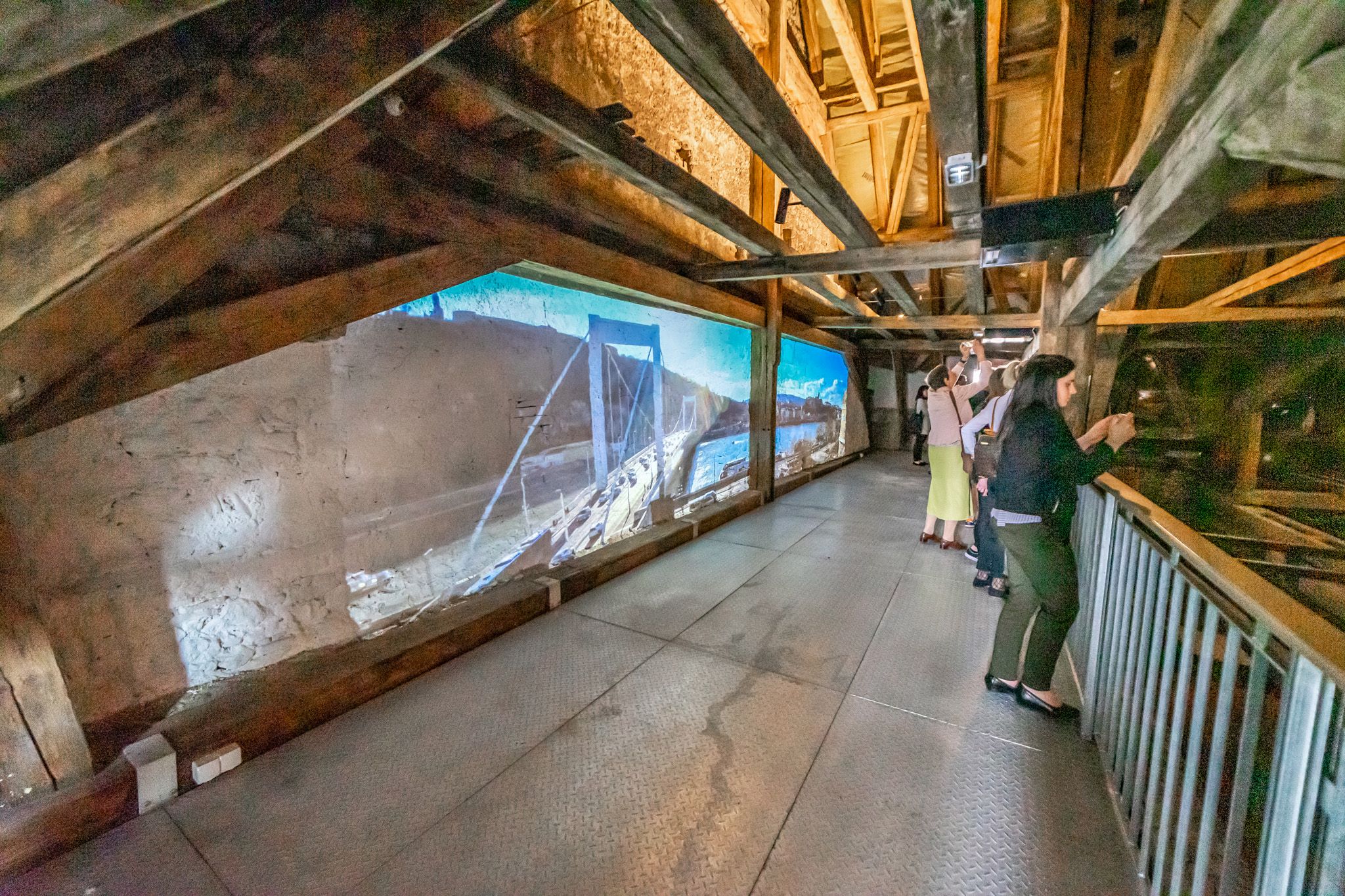
Looking our from the bridge: crossing from the south to the north tower (Photo Balázs Both/pestbuda.hu)
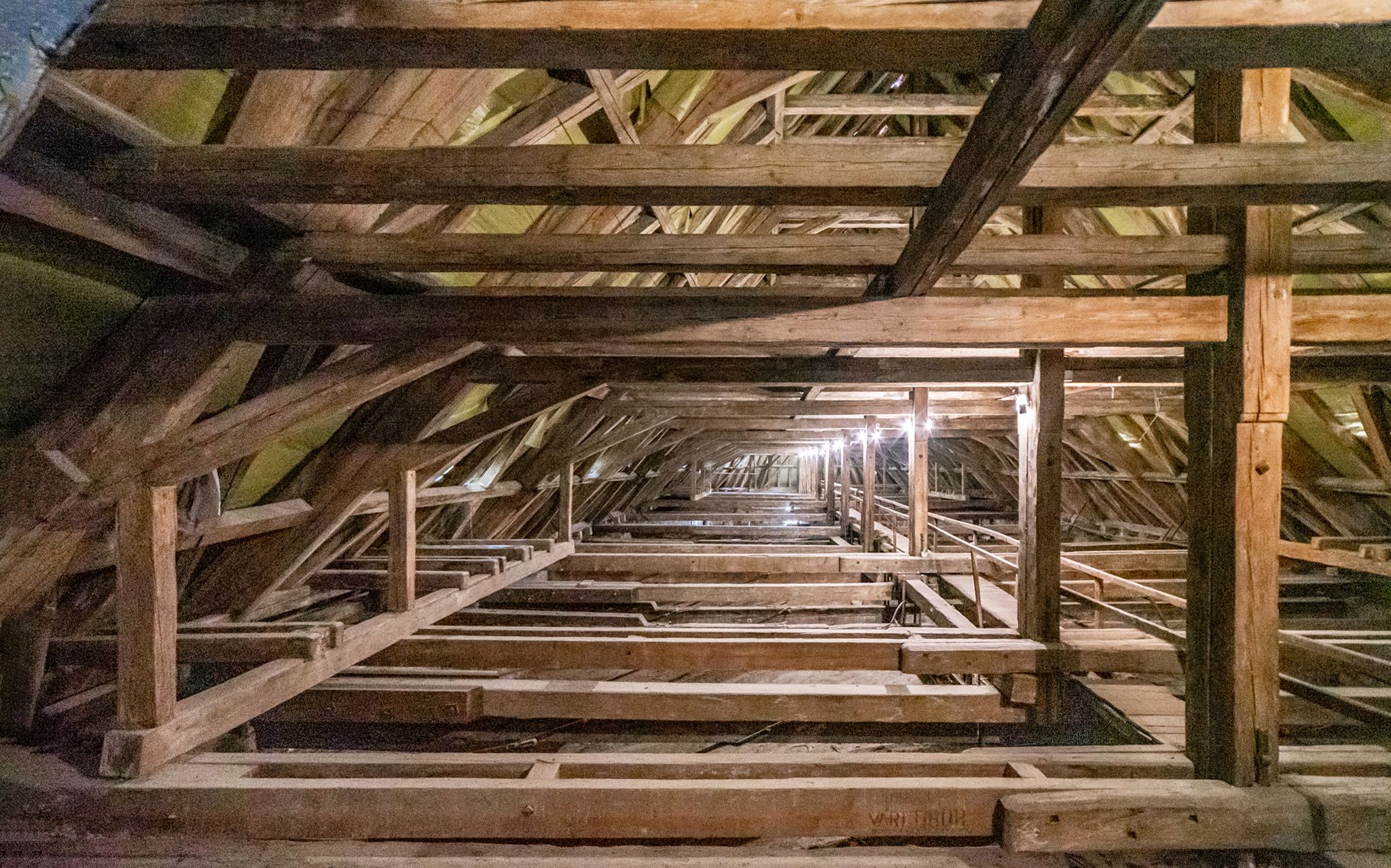
The wooden structure of the roof seen from the bridge between the two towers (Photo Balázs Both/pestbuda.hu)
The north tower offers a view of St Catherine of Alexandria Church, The Castle Garden Bazaar, and Buda Castle itself.
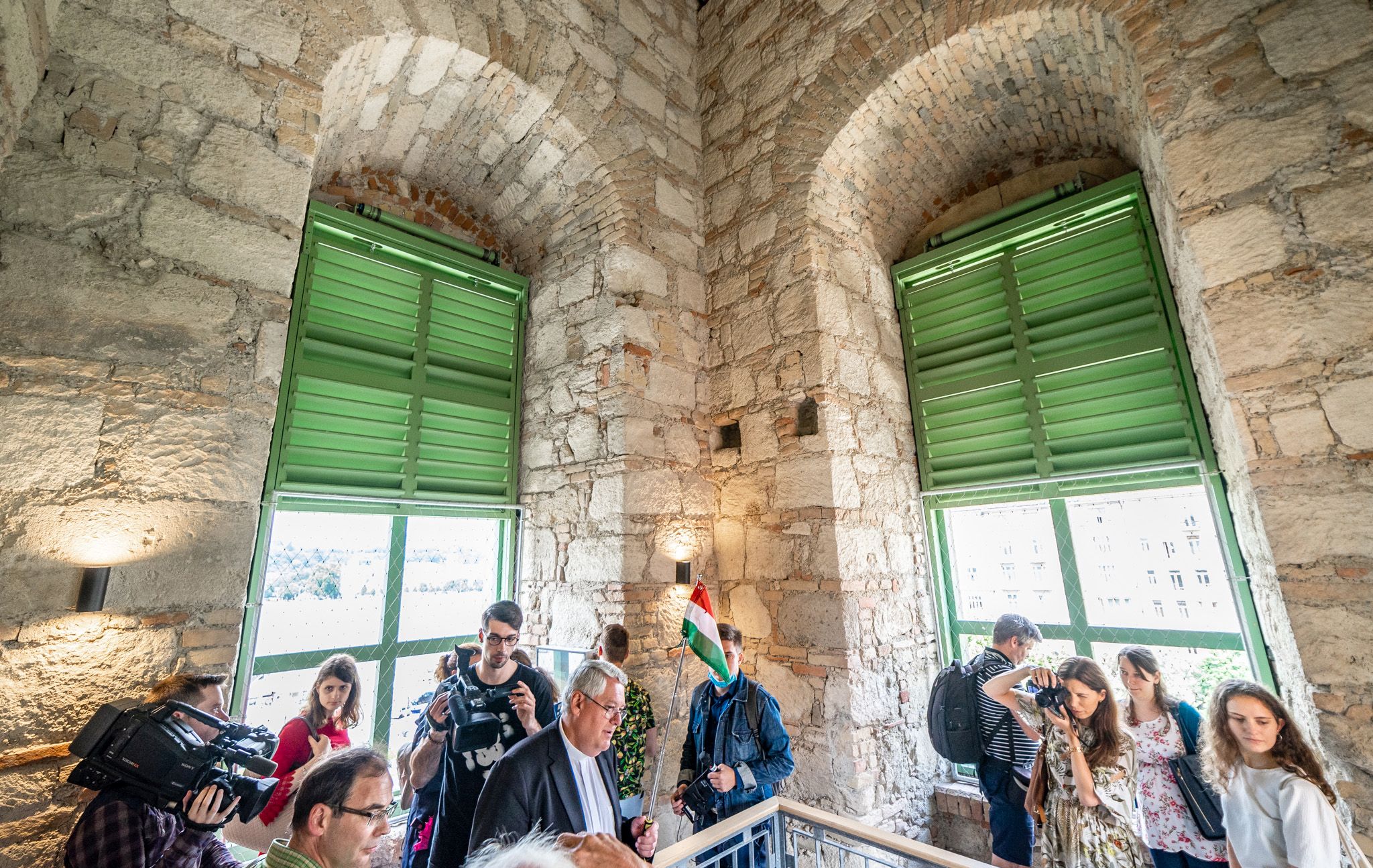
Lookout in the north tower (Photo Balázs Both/pestbuda.hu)
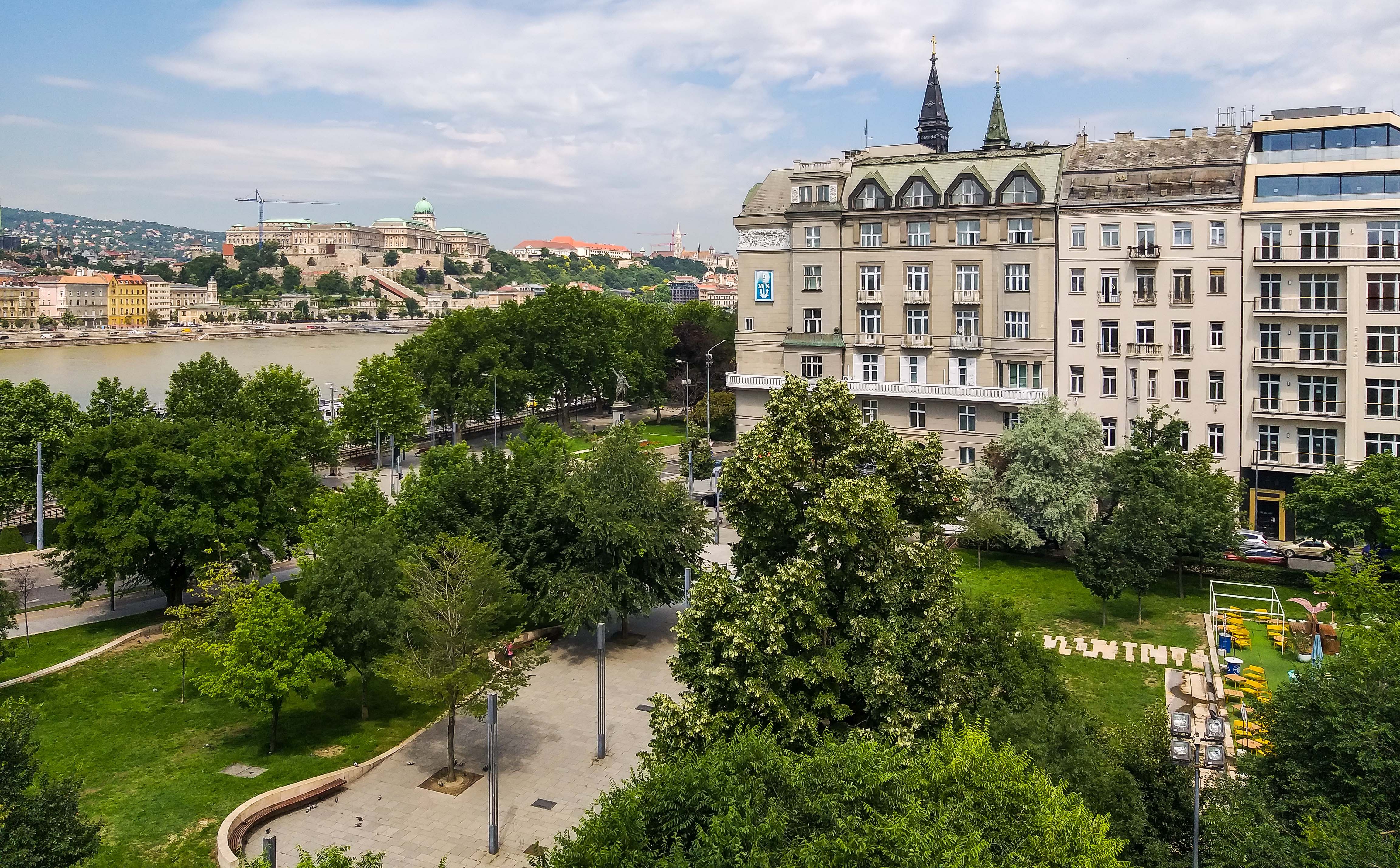 Buda Castle seen from the Ferenc Liszt tower (Photo Balázs Both/pestbuda.hu)
Buda Castle seen from the Ferenc Liszt tower (Photo Balázs Both/pestbuda.hu)
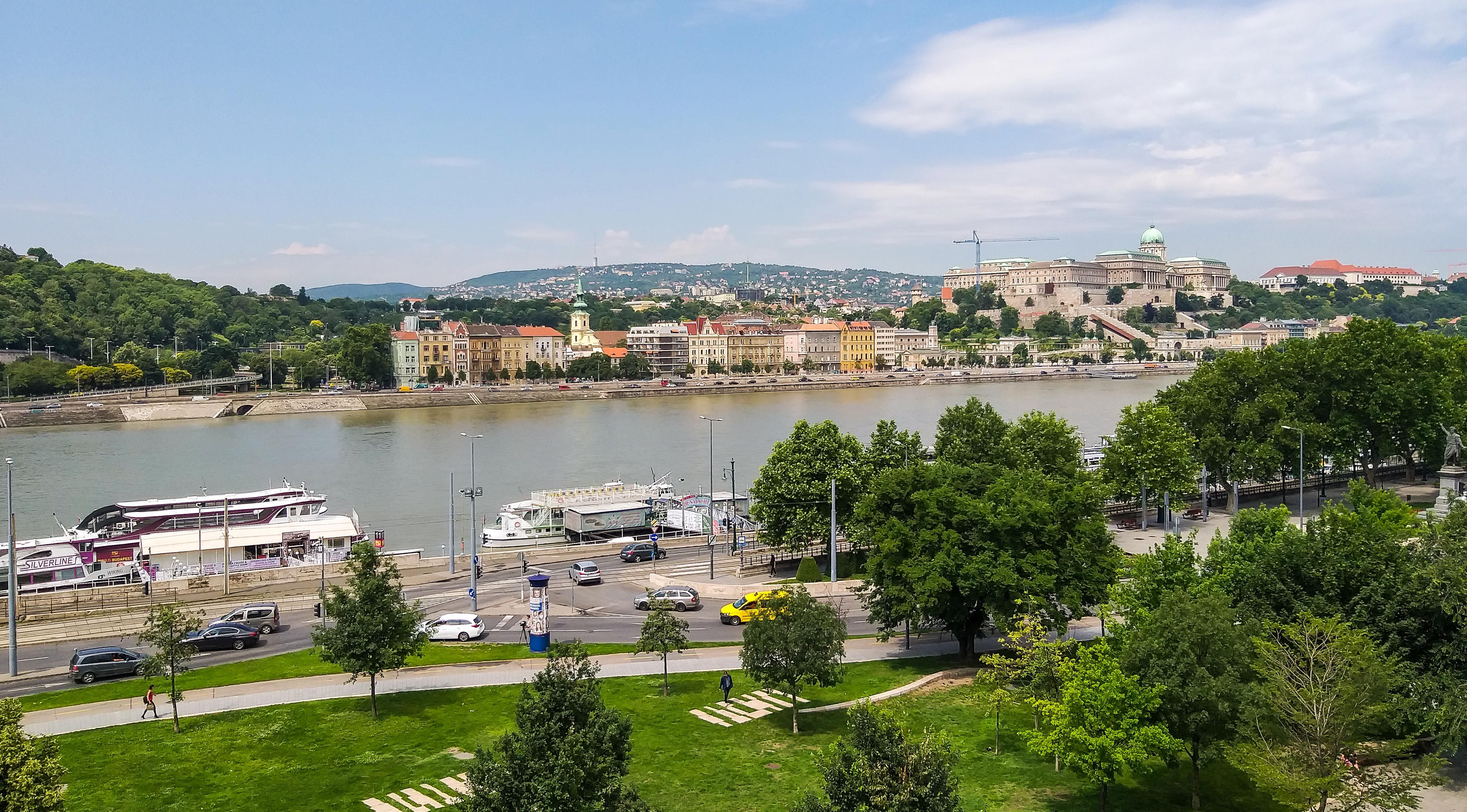
Buda seen from the Ferenc Liszt tower (Photo Balázs Both/pestbuda.hu)
Touchscreen devices placed on the different levels of the lookouts provide information about the buildings that can be seen. The short descriptions are currently available in seven languages.
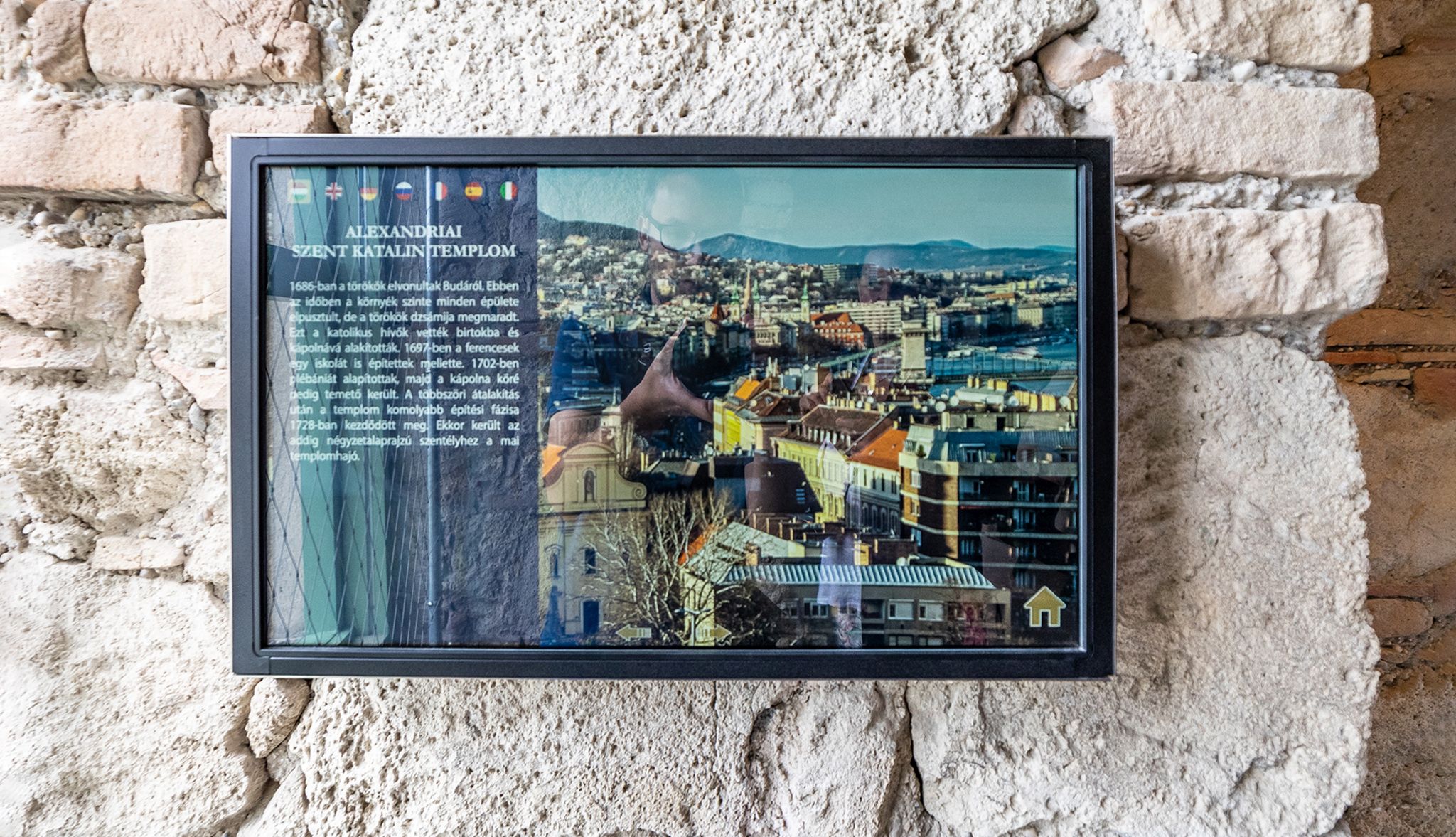 Touch screen devices help visitors understand what they see Photo Balázs Both/pestbuda.hu)
Touch screen devices help visitors understand what they see Photo Balázs Both/pestbuda.hu)
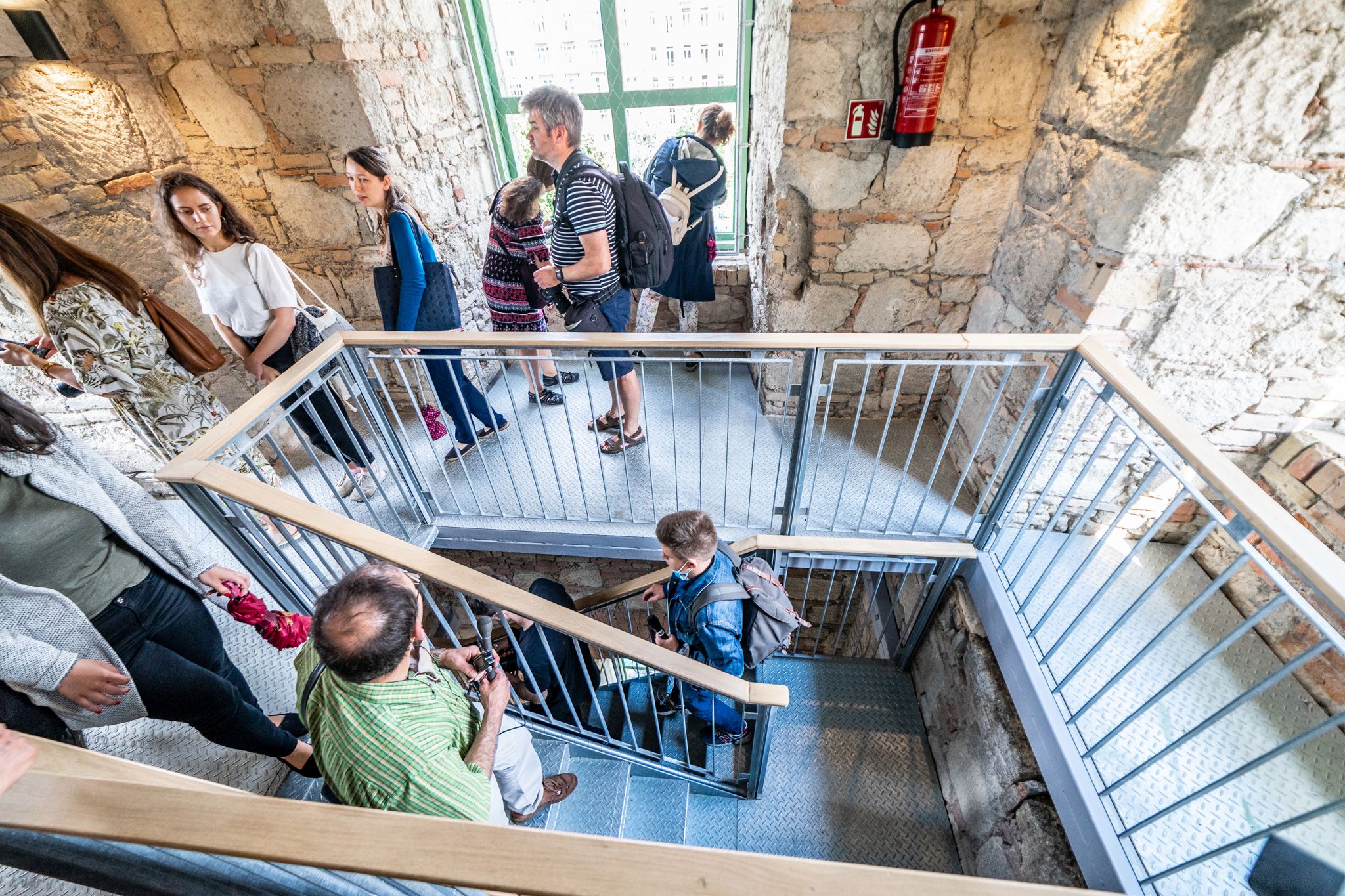
No one expected the surprises awaiting visitors at the bottom of the north tower (Photo Balázs Both/pestbuda.hu)
Previously the two towers had been referred to as the north and south towers. However, following the renovations, the north tower was named after Ferenc Liszt, the world-renowned composer and musician. A bust of Liszt alongside a plaque and a bust of the artist decorate the north tower.
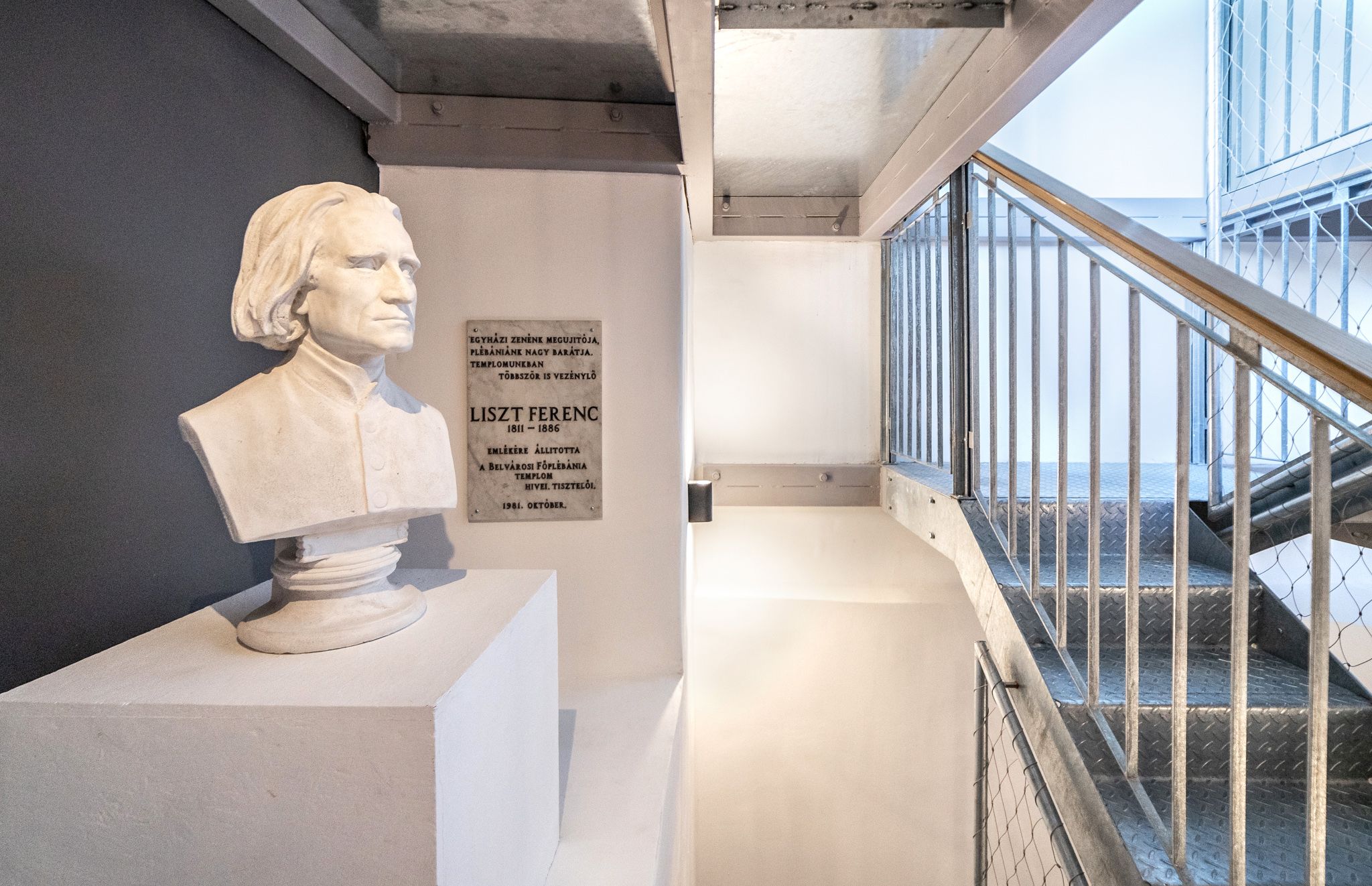
The bust of Ferenc Liszt and memorial plaque in the north tower (Photo Balázs Both/pestbuda.hu)
Visitors are told that the tower was named after the artist because he had a long-running connection to the church. Many of his works were first played in the church, and the artist himself often performed on its organ. Furthermore, Liszt was a regular guest of Mihály Schwendtner abbot priest at the time, spent the night in the parish guest room several times, and was also the best man at a wedding conducted in the church once.
In 1879, Liszt also dedicated his Via crucis to Mátyás Engesszer, the chorister of the church. However, the premiere was cancelled due to the deaths of Mihály Schwendtner and Mátyás Engesszer. Following the composer's death, the work was thought lost but was eventually found in the National Szechényi Library and finally premièred in the church on Good Friday in 1929.
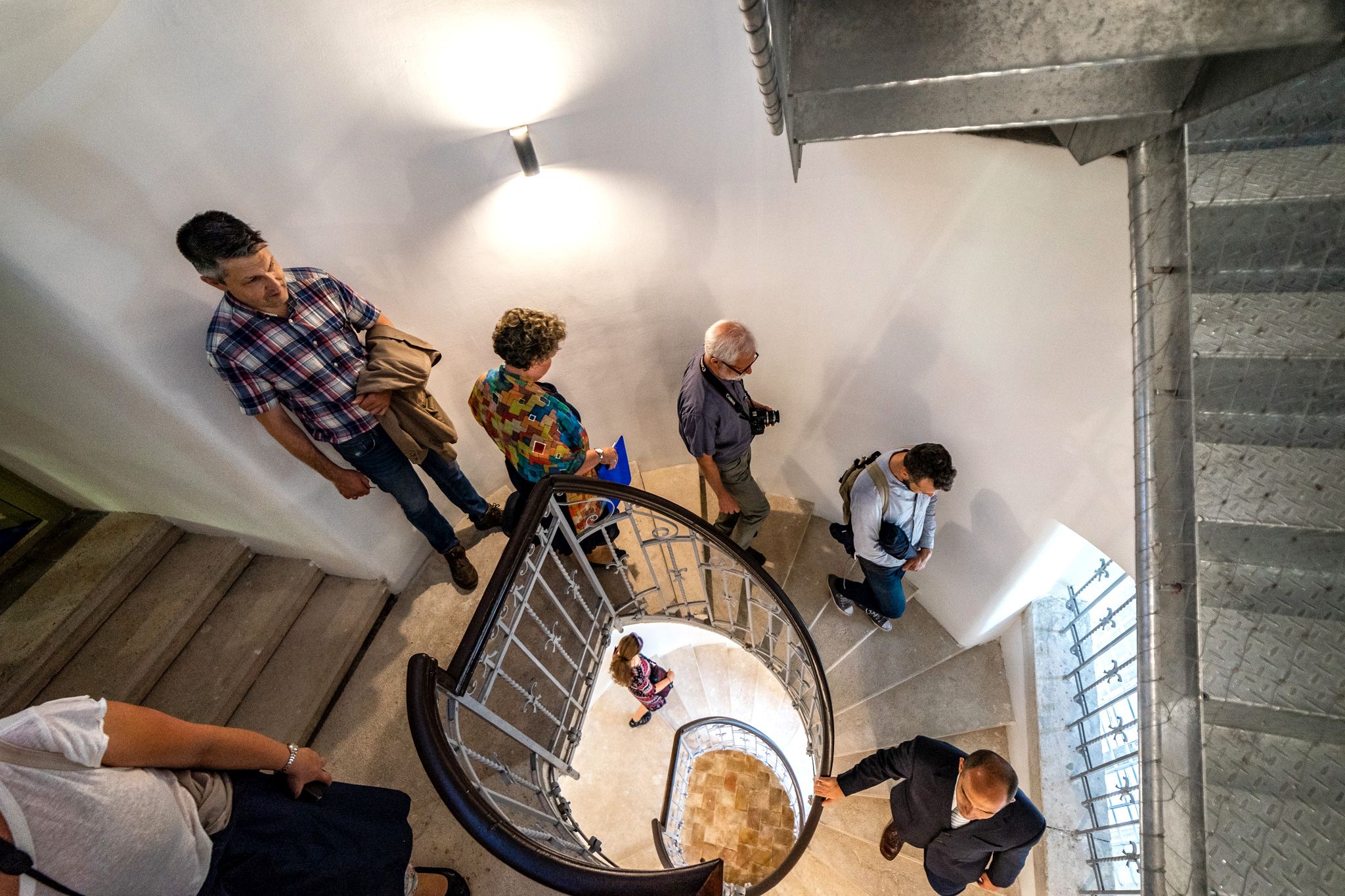
A beautiful spiral staircase leads down from the Liszt Ferenc Tower (Photo Balázs Both/pestbuda.hu)
Utunk végén bártan kijelenthetjük, hogy a munkálatok eredménye egy olyan bravúros látványosság lett, mely bizonyára hamar kedvelt programmá válik nem csak a külföldi, hanem a hazai közönség számára is.
The lookouts are open to the public Monday to Saturday between 10 am and 5 pm. Due to the loud bells found in the Ferenc Liszt tower, the north tower is closed between 11:50 and 12:10, and on Fridays, 2:55 pm and 3:10 pm alongside the midday slot.
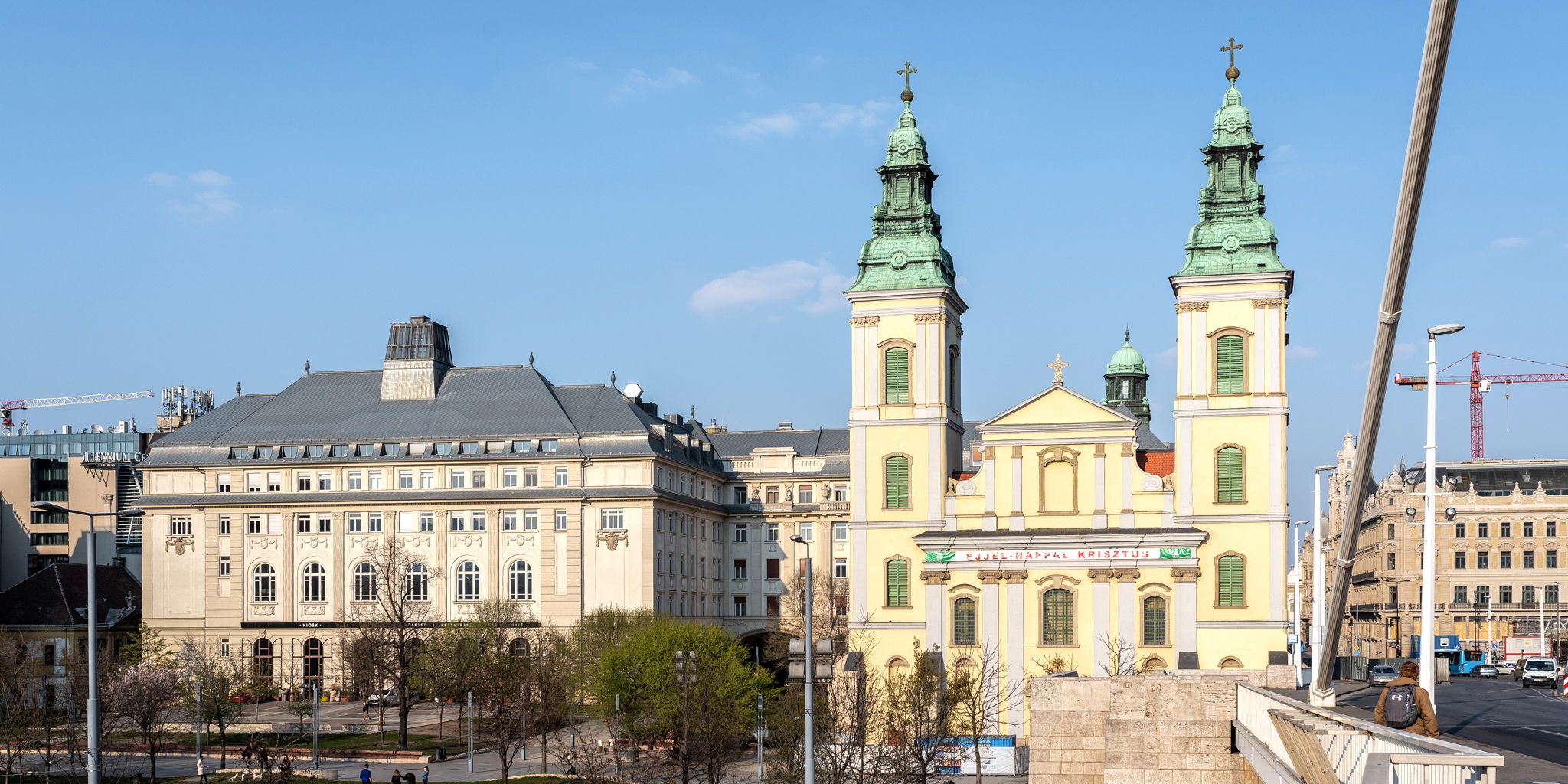
The Inner City Parish Church (Photo Balázs Both/pestbuda.hu)
Guided tours of the church are provided on request every Wednesday from 2 pm. The tour gives visitors the chance to see the relics of St Ladislaus, St. Elizabeth and St. Gerard, the Turkish mihrab, the 14th-century Enthroned Madonna fresco, the 15th-century Matthias oratory, the altar designed by Pál C. Molnár, the lower church and the two lookout towers.
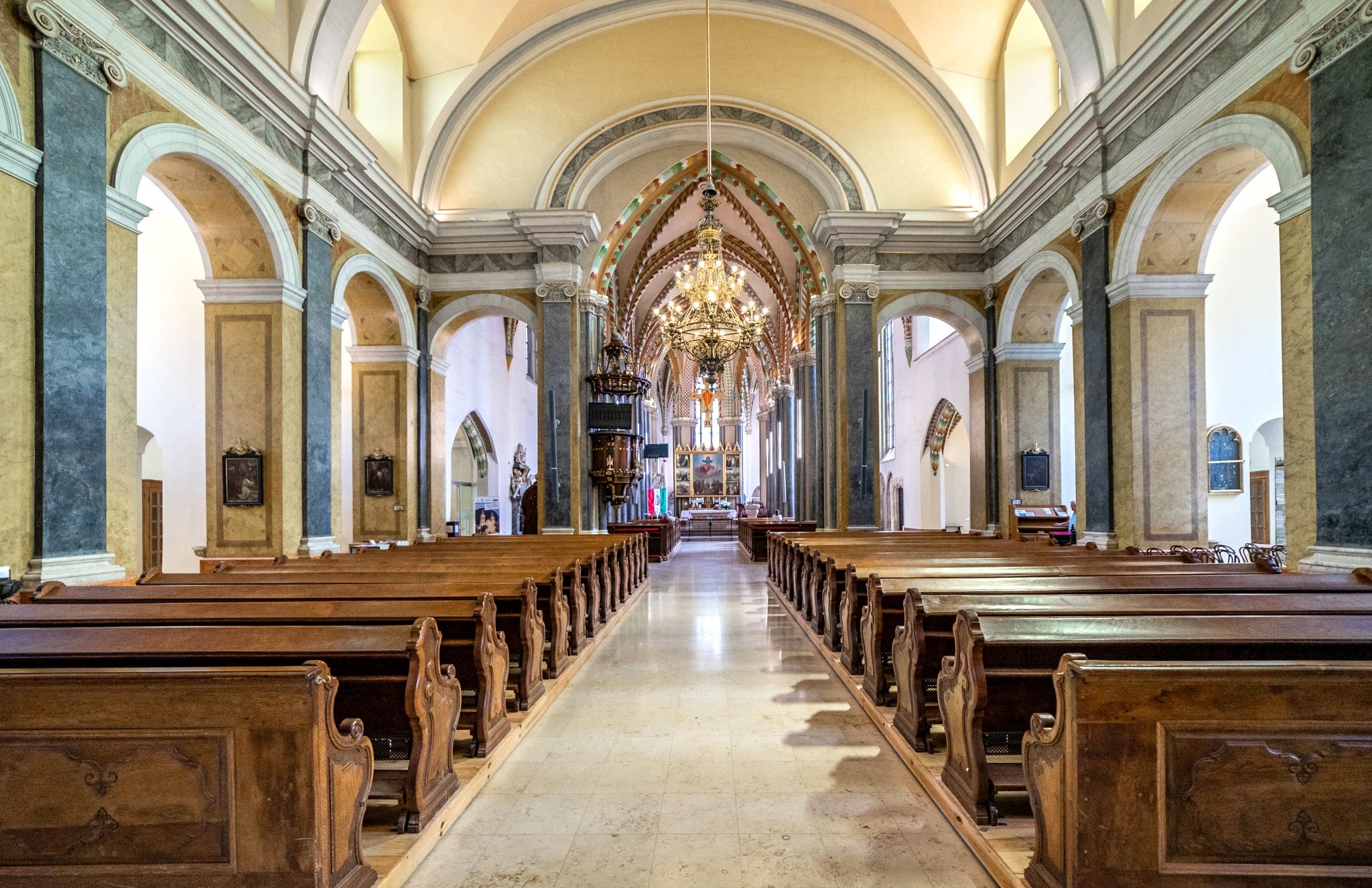
The baroque nave (Photo Balázs Both/pestbuda.hu)
Cover photo: The Inner City Parish Church (Photo Balázs Both/pestbuda.hu)

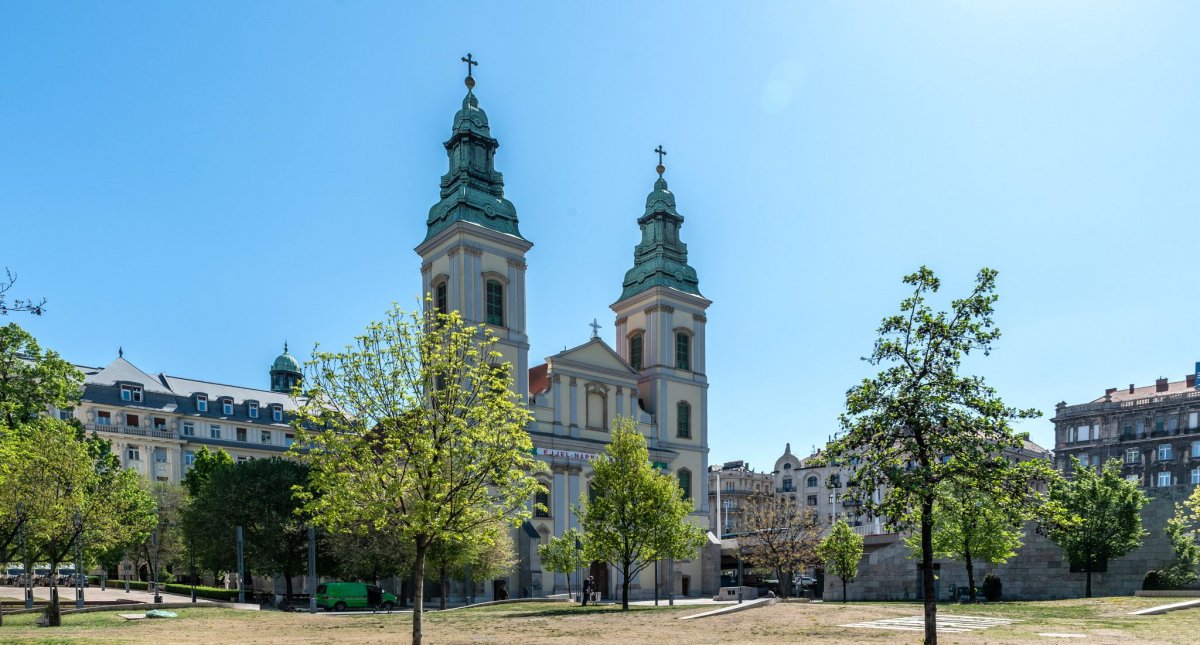



































Hozzászólások
Log in or register to comment!
Login Registration